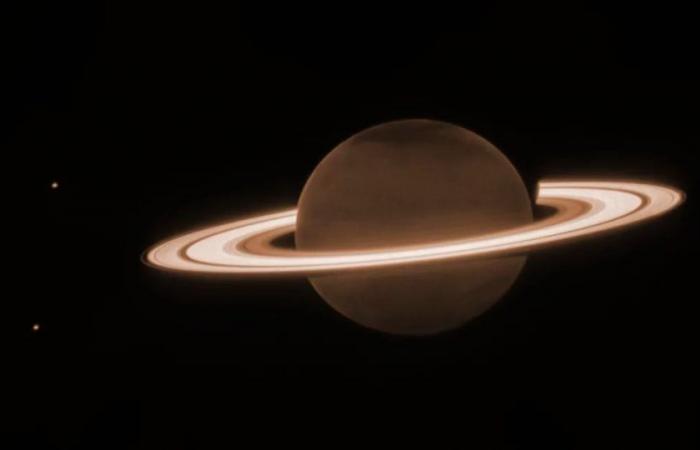He Solar system It is composed of rocky planets that are relatively small compared to the gas giants. These worlds, composed mainly of hydrogen and helium, exert a gravitational force of such magnitude that they attract dozens of bodies that orbit around them. Furthermore, gases produce meteorological activities which are studied due to their particular characteristics. Given this reality, experts say that it is essential to understand how their systems work in order to uncover the secrets of its evolution.
In a recent study, University of Houston scientists led by Xinyue Wang, a third-year PhD student in NSM’s Department of Earth and Atmospheric Sciences, found a large energy imbalance in Saturn which could explain the impressive storms that develop on the planet. This imbalance is generated because its hot core and extremely eccentric orbit make the seasons last for years in each hemisphere. The findings questioned the methods used to analyze the climate of the gas giants.
The experts used data from the Cassini space probewhich compiled information about Saturn for almost two decades, to check the imbalance that changed the understanding that was had about the atmospheric events on these types of planets. “This is the first time that a global energy imbalance has been observed seasonal scale into a gas giant,” said Liming Li, a physics professor in the UH College of Natural Sciences and Mathematics.
To measure the amount of radiation received solar observations from the Imaging Science Subsystem (ISS) and the Visual and Infrared Mapping Spectrometer (VIMS) were used, and to quantify the energy emitted were based on thermal observations from the Composite Infrared Spectrometer (CIRS).
Saturn’s orbital period includes 29.4 Earth years. The study data show that at that time the energy emitted presents minor variations compared to the radiation obtained by the Sun and its internal heat.
The energy that the Earth receives from the Sun is usually proportional to the emitted one, so the energy budget is relatively stable and its seasonal energy imbalance is not so relevant. However, its orbit includes a low eccentricity, not like that of Saturn “which varies by almost 20% from aphelion (the point in the orbit farthest from the Sun) to perihelion (the point in the orbit closest to the Sun),” the University of Houston explained in a press release.
In addition, the gas giant has extra factors: the heat radiated by its core and its characteristics rings, which can also influence the energy balance, since it blocks part of the solar radiation. However, the previously mentioned factors were not taken into account when studying this type of planets due to the lack of precise observationsbut this research detailed its effects on Saturn’s climate and raised the need to incorporate them into future analyses.
The measurements analyzed also served to estimate the internal heat of the planetas well as verify the consequences of the imbalance in the convective stormsThe latter could be related to storms occurring on Earth in future studies, in order to find some similarity.
“As far as we know, the role of energy balance in the development of Humid and convective storms on Earth “It has not been fully examined, so we plan to investigate that as well to see if there is a connection,” Wang said.
The current problem is that the models by which atmospheres and the evolution of gas giants are studied are based on a balanced global energy budget. From the investigation it was possible to prove that this is not the case and that the way planets are examined must be changed.
In the future, the team plans to study the Uranus imbalance, which they consider will be larger due to its eccentric orbit and high obliquity. In the coming years a flagship probe which will observe the distant planet.
“Reexamine the cooling flows, internal heat and energy imbalances of other giant planets in our solar system taking into account the seasonal variation of radiant energy components is crucial for understanding planetary formation and evolutionboth inside and outside our solar system,” commented the scientists who authored the study.






